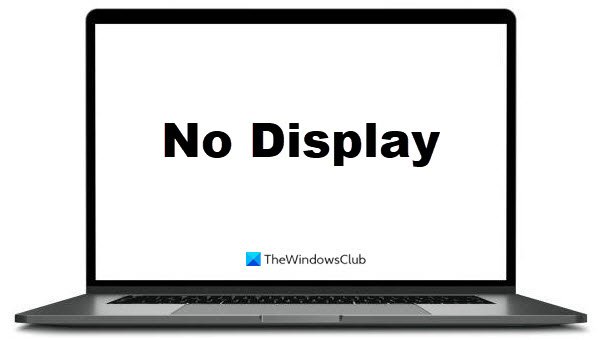Windows 11/10 PC turns On but no display or beeps
If your Windows 11/10 computer turns On but there is no display on the monitor or keyboard, try these suggestions to fix the issue. Let’s see these methods one by one.
1] Test your monitor
When your Windows 10 computer turns On but there is no display on the monitor or keyboard, the first step is to check the monitor. This will let you know whether your monitor is working properly or not. And you will save your time in other troubleshooting methods. First, check the power supply. If the power supply is OK, then check whether any cable connected to the monitor is loose or not. If all the connections are OK but the monitor is not turning On, connect the same monitor with another PC. If the monitor does not turn On after connecting with another PC, it is faulty.
2] Test the VGA cable
Sometimes, the monitor does not display anything after getting the power supply due to a faulty VGA cable. If you find your monitor OK in the first method, try replacing the VGA cable. Also, check whether the connector of the VGA cable is damaged or not. If your monitor still remains blank after replacing the VGA cable, move ahead towards other troubleshooting methods.
3] Identify the beep codes
The computer comes with a built-in speaker that creates a beep sound. You might have heard this beep sound while turning the PC On. When something goes wrong, the computer generates a different pattern of beep sound so that the user can understand the cause of the error by decoding the beep code. The different types of beep codes that your computer generates at the time of a problem are listed on your computer or motherboard manual. See if you can decode the beep code.
4] Perform a RAM checkup
In most cases, RAM is the main culprit for getting no display on the monitor after turning the computer On. If you have two RAM sticks on your computer, remove one of them and then turn On your PC. If you get a display on the monitor, the RAM stick that you have removed may be damaged. To confirm it, insert the second RAM stick in the same slot after removing the first one and then turn your PC On. Sometimes RAM slot is faulty. You can check whether your RAM or RAM slot is faulty by inserting both RAM sticks one by one in one slot and then in the other slot. If the RAM stick is dirty or corroded, consider cleaning it.
5] Remove external hardware
If you do not hear any beep sound on startup, try disconnecting all the external hardware devices. The motherboard requires only CPU and its fan, RAM, and SMPS to get started. All other hardware including SSD, HDD, external card, and other external devices, including printers, scanners, etc., are not required by the motherboard to startup. Therefore, you can remove all these extra devices and boot the computer. If the computer boots correctly, try connecting the removed devices one by one and boot each time. This lets you know which hardware has damaged.
6] Check the Graphics card
Sometimes users get a blank screen due to the damaged graphics card. Maybe you want to check your graphics card. If you do not have a graphics card installed on your PC, you can skip this step. In such a case, all the graphical operations are handled by your motherboard. Sometimes, the graphics card corrodes if the user has not cleaned it for a long time. Or dust can accumulate on it due to which the communication loss occurs between the graphics card and the GPU. Now, you have to remove the graphics card and then run your PC without it. Please wear anti-static wrist bands while removing the graphics card for safety. This will also protect the sensitive internal components of the computer from being damaged by the static charge. To run your PC without the graphics card, connect the video cable of your monitor with the video port of the motherboard (VGA/HDMI/DVI). If you get an output on the display, your graphics card may be faulty. If your graphics card is dirty or corroded, clean it using isopropyl alcohol. In most cases, graphics cards only require cleaning. After cleaning it, insert it into the respective slot and run your computer. If you do not get any output on the screen, consider replacing the graphics card.
7] CPU and Motherboard checkup
If none of the above methods work for you, your CPU or motherboard may be damaged. In any case, if these suggestions do not help, you have to take professional support to repair the computer. Related posts that you may like to read:
Windows Black screen problems.Computer monitor has a yellow tint on the screen.Windows computer makes a beeping noise when you try to turn it on.

